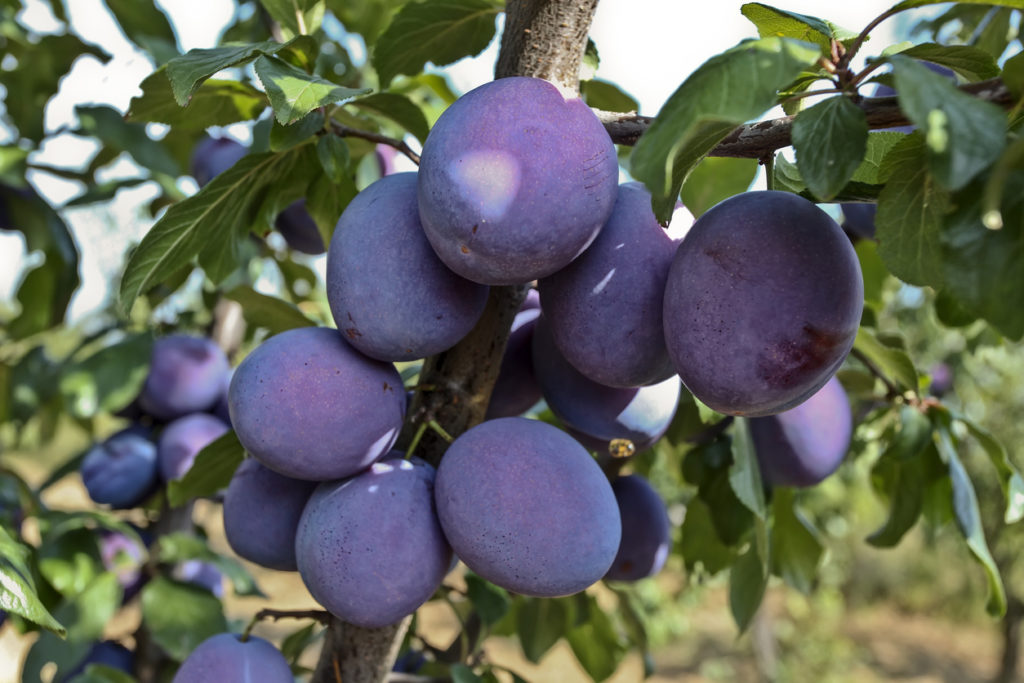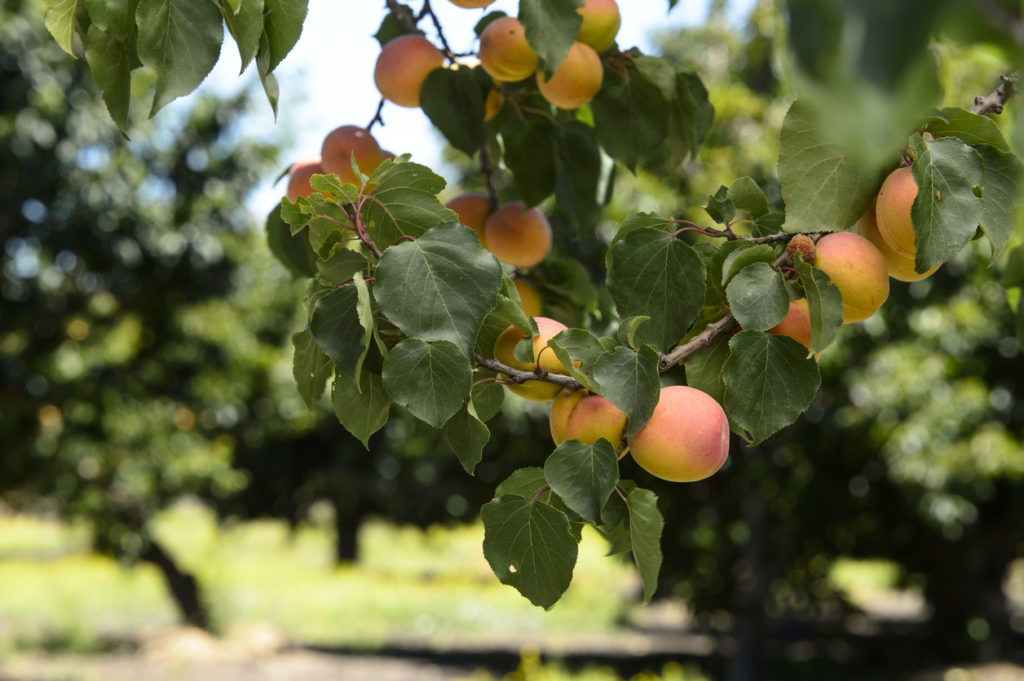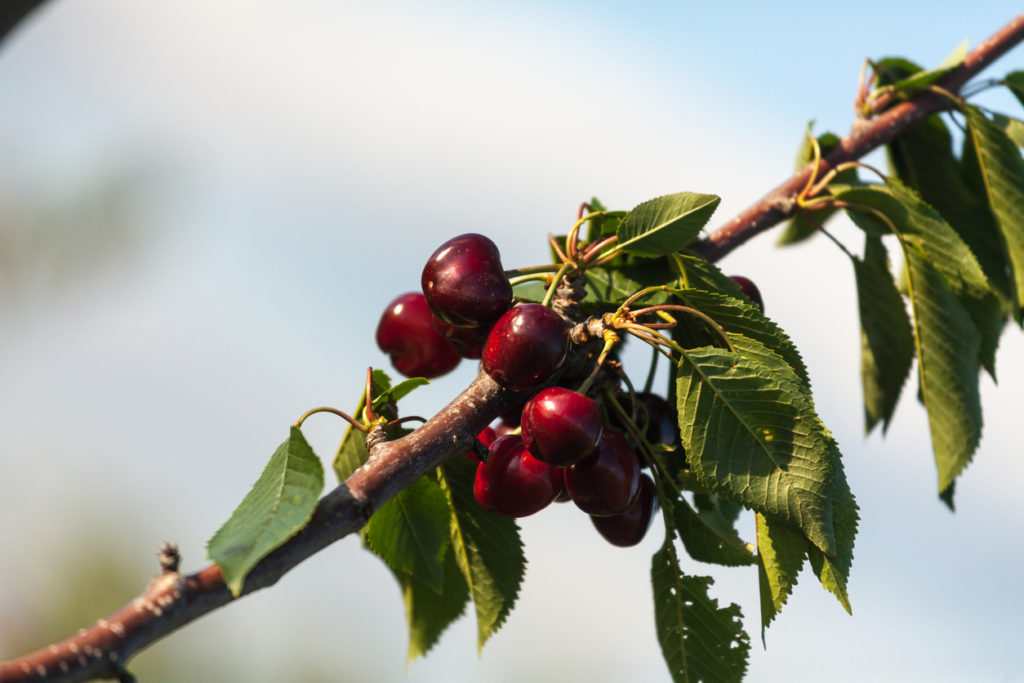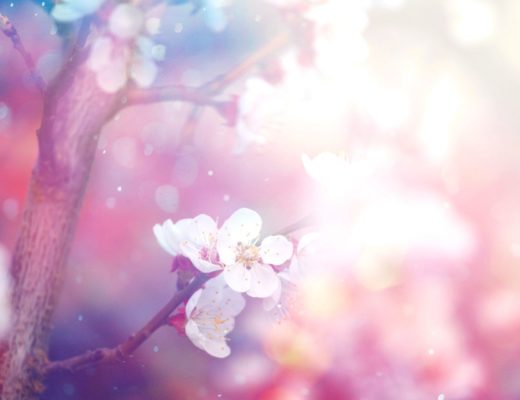Guest post by Rachael Baihn of LawnStarter.
There is something special about being picking a piece of fruit off a tree in your own garden. Some trees can grow to take up a lot of space while others can be kept quite small to adapt to your garden size. If you live in an urban jungle with little space on your patio or a home in suburbia with plenty of surrounding space in your backyard — there is always a way to create a thriving outdoor space full of fruitful plants, shrubs, and trees.
Depending on the variety you choose, some fruit trees are self-pollinating and some require a pollinator. Self-pollinating fruit trees include apricots, nectarines, peaches, and sour cherries; whereas fruit trees that require pollinators include apples, pears, plums, and sweet cherries. Trees requiring a pollinator may seem like additional work, however, it’s really just a strength in numbers game. Big or small orchard–here are tips on the best low-maintenance fruit trees to plant in your garden or fill your small outdoor space with.
-
Plums
Requiring less care than other fruit trees, plum trees are an excellent choice for a low-maintenance orchard. They adapt to a wide variety of conditions and are more compact than other fruit trees that require little to no work. Plums are a stone fruit that are both delicious and beautiful. Most plum trees are not self-pollinating, so you will need to plant at least two plum trees to bear fruit. When planting a plum tree, it is important to make sure that the variety you choose will grow well in your climate. European, Japanese, and Damson plum varieties are available depending on your location.

Plum trees should be planted in well drained moderate soil that gets full sun exposure. Plant plum trees at the highest point of your garden to discourage frost from settling around the base as it can damage the tree. Plum trees do well in areas that are a bit sheltered from wind exposure as well. Standard sizes should be planted 20-25 feet apart while dwarfs should be planted 15-20 feet apart. Thinning branches is an important part of having plum trees in order to take off branches that are too small to hold the fruit weight. Water newly planted trees weekly and continue to water well into October to encourage stability during the winter. Prune young plum trees in early spring and established trees in the middle of summer to avoid infection.
-
Peach
Homegrown sun-ripened peaches are a staple for many pies, jams, muffins, and cobblers throughout the summer season. Peach trees grow best for gardeners who are in Hardiness zones 5-8 and possibly to zone 9 if winter temperatures don’t drop below -20°F. Peach trees love full sun and they need to be planted in soil that is well drained. Peach trees come in a large standard size or a smaller dwarf size, making this tree great for a variety of gardeners with different spaces. Plant standards 15-20 feet apart and dwarf varieties 10-12 feet apart. Check the tag on your peach tree to see if it is self-pollinating or if you need to purchase two.

-
Pears
Juicy pears are a staple in summer and fall dishes and pear trees have little to no issues with disease or insects. Pears are not self-pollinating, so you will need at least two in a garden to produce any fruit. Pear trees are slow starters and probably won’t produce any fruit until at least 3 years after planting. However, once they are established, they should have plenty of years to bear good fruit.

Pear trees like well-drained soil in full sun and prefer areas of a garden that have good air circulation. Fire blight is the most common pear disease that is seen mostly in the Eastern United States. Choosing fire blight resistant varieties will help to deter this disease from ruining fruit. Standard size pear trees should be planted 20 feet apart and dwarf varieties should be 15 feet apart. Only a small amount of ammonium nitrate is required for pear trees and check with your local extension office on what is common in your area. Annual pruning is important in creating a central leader system to produce the most fruit.
-
Cherries
If you want beautiful flowering trees with the bonus of edible fruit, then a cherry tree is a great option for a low-maintenance fruit tree. Both sweet and sour cherry trees are easy to grow and both fruits have a wide variety of uses. Sweet cherries are used for raw eating and you’ll need at least 2-3 trees for pollination. There is a dwarf sweet cherry tree that is self-pollinating that is new to most markets as well. Sour cherries are uses for jams and cooking and those trees are much smaller than sweet cherry trees.
There are both standard and dwarf sizes and it can be about 4 years before a cherry tree will begin producing fruit. Standard trees can become quite large and ladders will be needed in order to harvest all of the 30-50 quarts of fruit that they produce. Dwarf varieties will produce 10-15 quarts in ideal conditions. Cherry trees should be planted in late fall or early spring in an area of full sun with good air circulation. Sweet standard cherries should be planted 35-40 feet apart and dwarfs 5-10 feet apart. Sour standards should be planted 20-25 feet apart and dwarfs 8-19 feet apart. Cherries enjoy moist soil so applying mulch around the base of the tree will help encourage a moist environment. Netting may be required when fruit appears to keep area birds from feasting on the fruit. Fertilize trees in the spring until fruit appears then only do so after each harvest. Prune trees in late winter right before spring arrives.

Incorporating fruit trees into your garden is a great way to produce beauty as well as a bountiful harvest of fresh and juicy fruit. Consider starting with these low-maintenance fruit trees that don’t require aggressive watering and enjoy minimal fertilizer applications. Plum trees are a good option for smaller gardens while cherry trees will quickly fill out a space in providing shade and bounty of fruit. Peaches and pears are other low-maintenance tree varieties that will produce many years of quality fruit. Starting with any of these low-maintenance fruit trees is a great way to produce the best fruit for your garden.
Rachel Baihn is a landscape and gardening writer. She can often be found exploring the ever-so scenic Austin Greenbelt or enjoying the company of neighborhood dogs.




Hello I have been busy ordering plants and trees we just purchased some property in Arizona and I’m getting ready to plant I really don’t know much about gardening so I’m going to try to find information are all these trees that I’m seeing are they for sale I’m looking for and affordable price